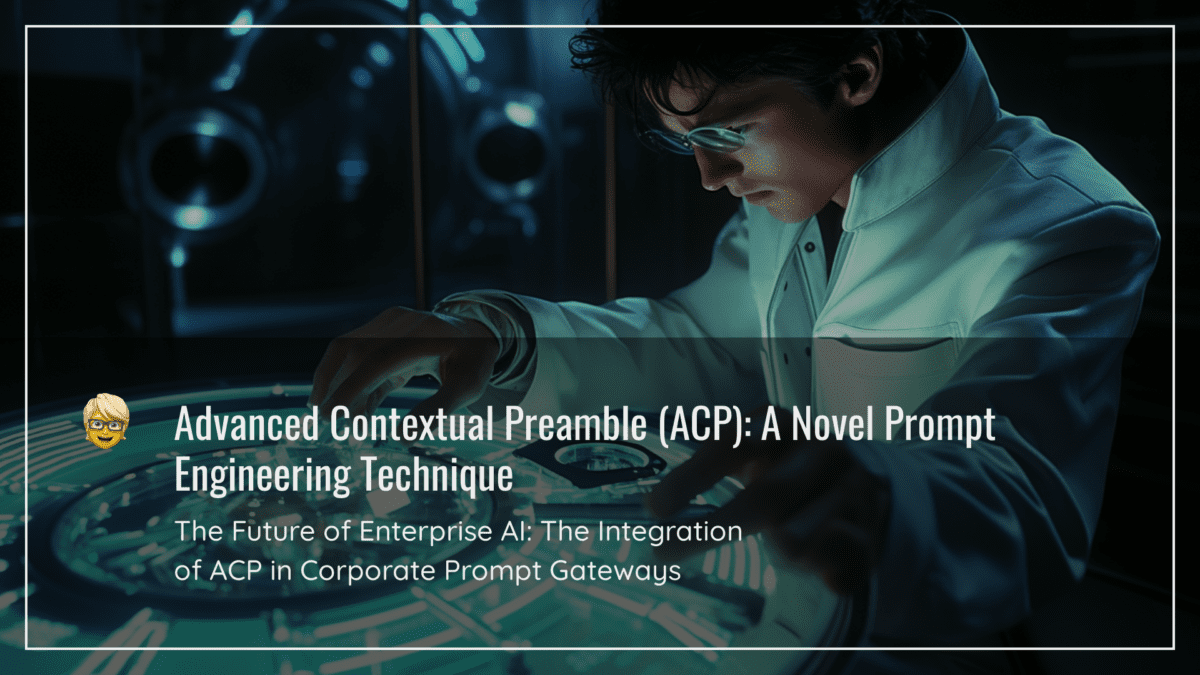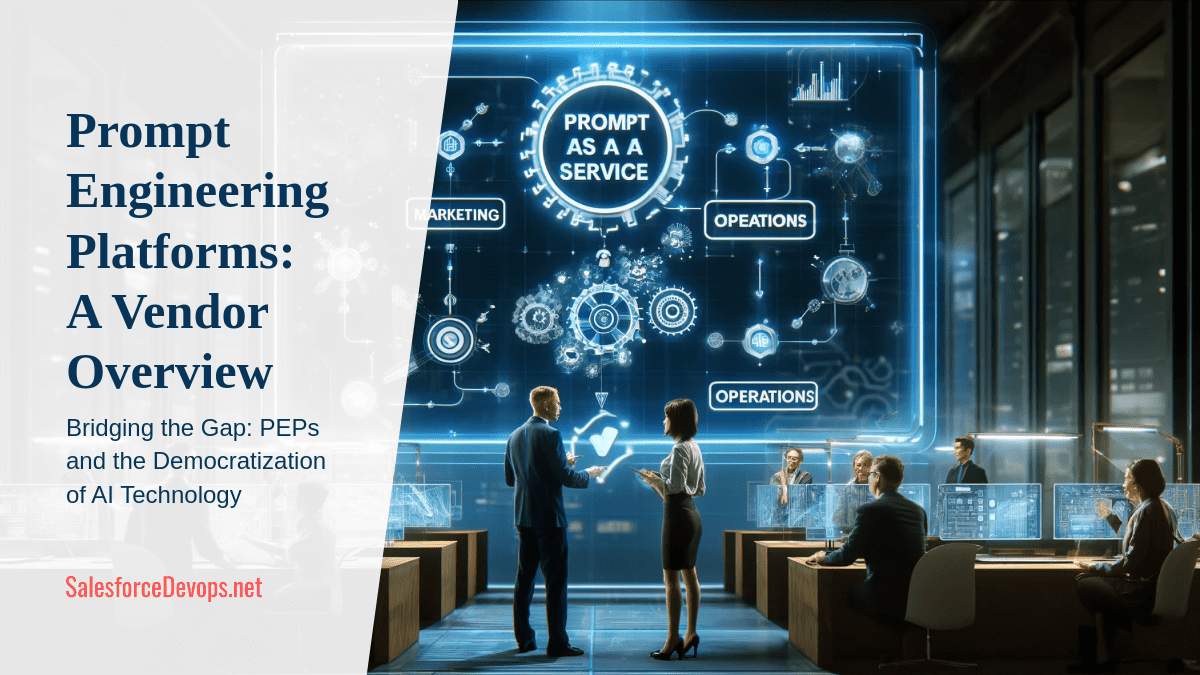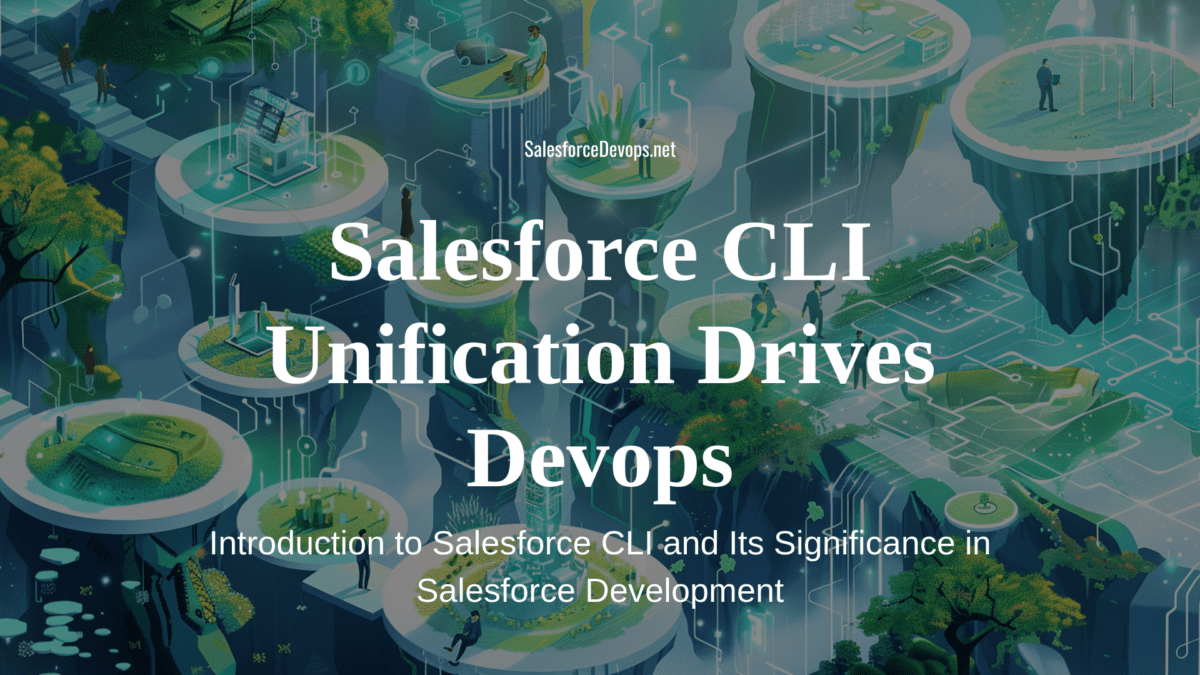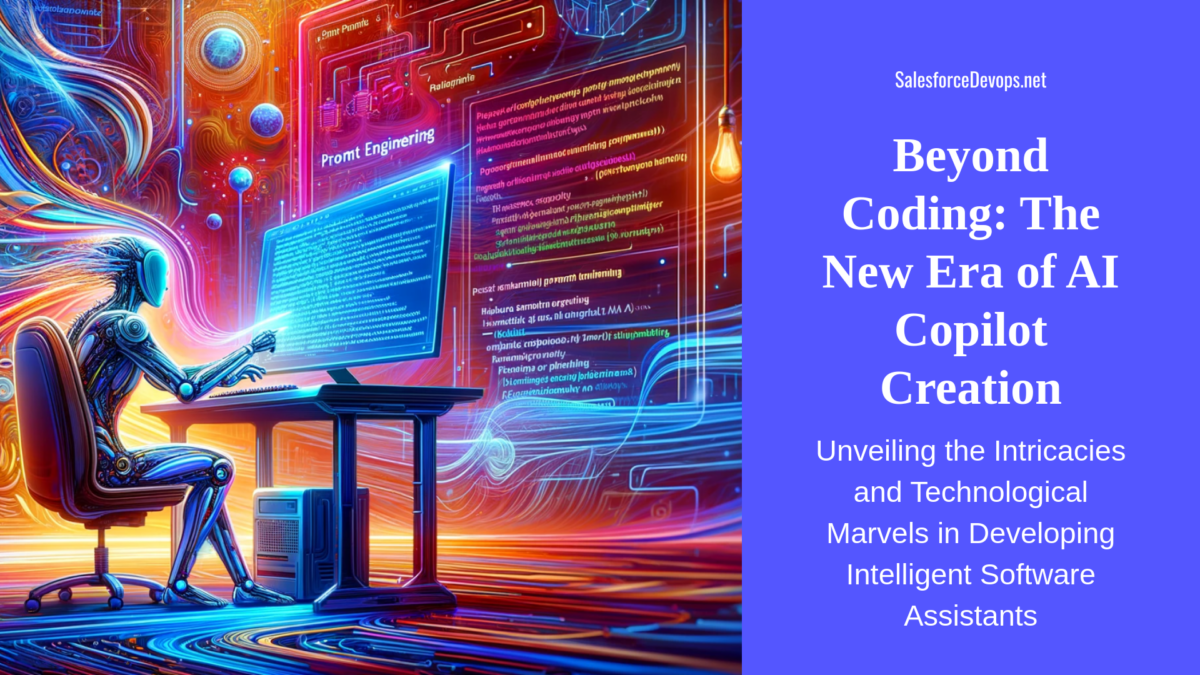Advanced Contextual Preamble (ACP): A Novel Prompt Engineering Technique for Enhancing Corporate AI Model Interactions and Streamlining User Experiences
Abstract: Prompt engineering is a crucial aspect of AI model interactions. It acts as the steering wheel that directs AI responses towards relevance and precision. Despite its importance, there’s often a gap between the potential of AI models and their actual performance. This research note introduces the Advanced Contextual Preamble (ACP), a novel prompt engineering technique aimed to bridge this gap. By offering detailed context to an AI model before the task, ACP promises to significantly improve the relevancy and precision of AI responses. This enhances the efficacy of AI model interactions. To encourage exploration of the ACP, an ACP Generator prompt, serving as a practical example, has been developed and is detailed in the appendix.
Table of contents
Research Note
As AI models continue to evolve at a rapid pace, developing innovative strategies for optimizing their interactions becomes crucial. These strategies, referred to as “prompt engineering,” shape the model’s responses and enhance their precision. They encompass a range of techniques – from setting roles (prompt priming), offering explicit output instructions (active instruction), tweaking model parameters for desired randomness (temperature and top-p control), to providing examples of both desired and undesired responses (negative and positive prompting).
The Advanced Contextual Preamble (ACP) emerges as a unique form of prompt engineering. It stands out because the ACP defines the task’s scope, constraints, and objectives, which encapsulates the AI model in a rich contextual bubble. This technique streamlines the model’s response generation pathway, making it more accurate and relevant.
Applying the ACP
Imagine working on a project with a specific tech stack, a pre-existing codebase, and other intricate details. Instead of explaining these aspects repetitively, the ACP technique allows you to include all this relevant information upfront. By doing so, the AI model is better informed, which leads to more accurate responses and a reduced need for clarifications. Time saved, efficiency improved, and interactions streamlined – that’s the promise of ACP.
The ACP Generator Prompt: A Practical Tool for Exploration
To help both researchers and practitioners explore the potential of the ACP technique, we have developed the ACP Generator prompt. It takes a user-provided description as an input, generates an ACP based on it. Then the generated ACP is used to guide the AI model’s responses.
The ACP Generator prompt is an excellent starting point for experimenting with different variations of ACP, observing their impact on AI model interactions, and refining them further. It’s a tool that promotes exploration, facilitating a deeper understanding of the ACP technique and its synergies with other prompt engineering strategies.
Incorporating the ACP into Corporate Environments
One of the substantial benefits of the ACP is its adaptability to corporate environments. Specifically, platform engineers can employ the ACP Generator Prompt to construct predefined AI prompts. These prompts, meticulously crafted to be detailed and comprehensive, serve as an information reservoir for AI models, setting a foundation for more nuanced and relevant responses.
After creating these predefined prompts, they are shared in a corporate prompt gateway. It is a central repository that acts as a bridge between the AI model and end-users. The gateway not only stores the prompts but also provides a mechanism to enhance them with parametric user prompts, enabling customization and adaptability based on specific user requirements.
Streamlining User Interactions with the Prompt Gateway
The integration of the ACP with the prompt gateway significantly streamlines user interaction. When an end-user invokes a prompt, they are presented with a simple form to fill out the parameters. These parameters, designed to capture crucial user requirements and contextual specifics, feed into the predefined ACP prompts.
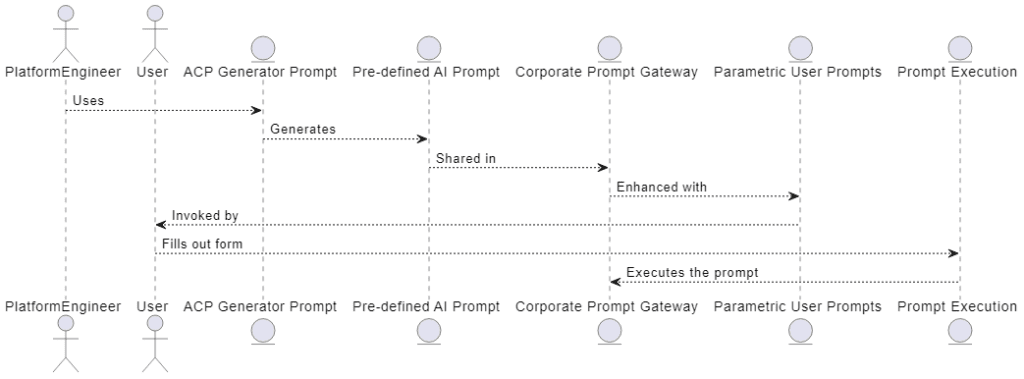
The result is a customized, highly relevant ACP that guides the AI model with minimal input from the end-user. The prompt gateway then executes the enhanced prompt, simplifying the interaction process and leading to more accurate and efficient problem-solving. This setup is another testament to the flexibility of the ACP, reinforcing its potential as a powerful tool in AI model interactions in both research and practical applications.
Looking Ahead
While preliminary applications have demonstrated the potential of the ACP technique, there’s a significant scope for further research to explore its full capabilities and potential extensions. Our exploration of the ACP technique started from efforts to improve prompt engineering techniques for Salesforce Apex programmers, and has now expanded to a broader spectrum of applications.
We hope that this research note sparks further investigation into the Advanced Contextual Preamble technique. Its potential applications span a wide range of domains, from software development to creative writing, and we encourage you to experiment with the ACP Generator prompt. Share your experiences, improvements, and new ideas. Together, let’s reinforce the ACP’s position as a versatile tool in the ever-evolving field of AI model interactions.
Appendix A – The ACP Generator Prompt
This ACP generator prompt is used as the System Message using GPT-4 Chat Completions API or simply pasted in a ChatGPT session. Please note, the ACP generator prompt only generates ACPs for topics highlighted in bold. Other researchers may want to shape generated ACPs for other topics.
Appendix B – Sample ACP Prompt
This ACP prompt was generated using the ACP Generator prompt with the prompt “an ai pair programmer for refactoring Apex code in Salesforce.”
Relevant Research
Brown, Tom B., Benjamin Mann, Nick Ryder, Melanie Subbiah, Jared Kaplan, Prafulla Dhariwal, Arvind Neelakantan, et al. “Language Models Are Few-Shot Learners.” arXiv, July 22, 2020. https://doi.org/10.48550/arXiv.2005.14165.
Hao, Yaru, Zewen Chi, Li Dong, and Furu Wei. “Optimizing Prompts for Text-to-Image Generation.” arXiv, December 19, 2022. https://doi.org/10.48550/arXiv.2212.09611.
Oppenlaender, Jonas, Rhema Linder, and Johanna Silvennoinen. “Prompting AI Art: An Investigation into the Creative Skill of Prompt Engineering.” arXiv, March 13, 2023. https://doi.org/10.48550/arXiv.2303.13534.
Rios, Thiago, Stefan Menzel, and Bernhard Sendhoff. “Large Language and Text-to-3D Models for Engineering Design Optimization.” arXiv, July 3, 2023. https://doi.org/10.48550/arXiv.2307.01230.
Shi, Fobo, Peijun Qing, Dong Yang, Nan Wang, Youbo Lei, Haonan Lu, and Xiaodong Lin. “Prompt Space Optimizing Few-Shot Reasoning Success with Large Language Models.” arXiv, June 6, 2023. https://doi.org/10.48550/arXiv.2306.03799.
Strobelt, Hendrik, Albert Webson, Victor Sanh, Benjamin Hoover, Johanna Beyer, Hanspeter Pfister, and Alexander M. Rush. “Interactive and Visual Prompt Engineering for Ad-Hoc Task Adaptation with Large Language Models.” arXiv, August 16, 2022. https://doi.org/10.48550/arXiv.2208.07852.
Swamy, Sandesh, Narges Tabari, Chacha Chen, and Rashmi Gangadharaiah. “Contextual Dynamic Prompting for Response Generation in Task-Oriented Dialog Systems.” arXiv, February 10, 2023. https://doi.org/10.48550/arXiv.2301.13268.
Xing, Zhenchang, Qing Huang, Yu Cheng, Liming Zhu, Qinghua Lu, and Xiwei Xu. “Prompt Sapper: LLM-Empowered Software Engineering Infrastructure for AI-Native Services.” arXiv, June 3, 2023. https://doi.org/10.48550/arXiv.2306.02230.
Zhou, Yongchao, Andrei Ioan Muresanu, Ziwen Han, Keiran Paster, Silviu Pitis, Harris Chan, and Jimmy Ba. “Large Language Models Are Human-Level Prompt Engineers.” arXiv, March 10, 2023. https://doi.org/10.48550/arXiv.2211.01910.
—
Keywords: Advanced Contextual Preamble, ACP, AI model interaction, prompt engineering, AI response optimization, ACP Generator prompt.
